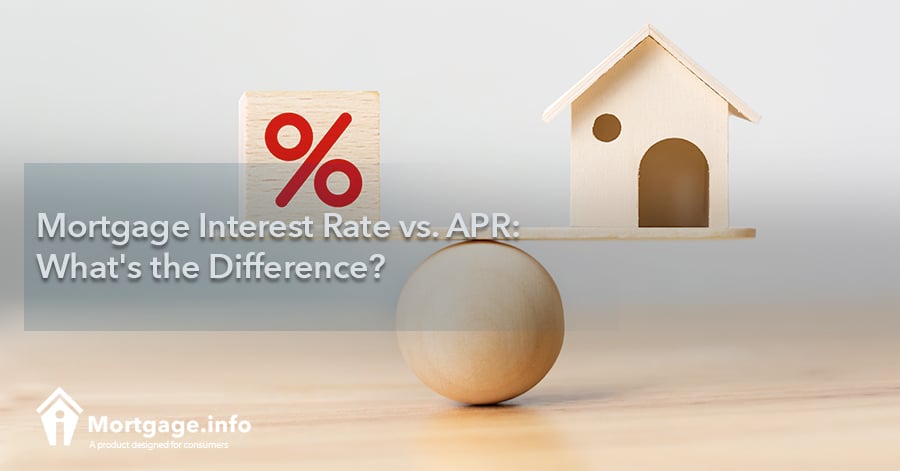
Shopping for a mortgage involves making many decisions. How long do you want to have the mortgage? What type of interest rate do you want – fixed or adjustable? What monthly payment is most affordable? These are just a few of the questions people go through to figure out which mortgage is right for them. Another factor, though, that you need to consider in many cases is the APR or Annual Percentage Rate. Many people do not understand this term and therefore ignore it. In reality, you should compare the mortgage interest rates against the APR when comparing loans either from the same or different lenders.
What is the Interest Rate?
Most people understand the interest rate. The lender uses this percentage to determine your monthly payment. If you have a fixed interest rate, it remains the same throughout the life of your loan, as does your payment. If you have an adjustable interest rate, it can adjust after the initial predetermined fixed period, typically once per year. This rate specifically controls the amount of your payment. For example, a $200,000 loan with a 4% interest rate will have a lower payment than the same loan with a 4.5% interest rate.
Many people focus on the interest rate because they want to keep their payment down. This is common and it makes sense! Who wants to pay more interest than necessary? Typically, that is true; however, there are other factors you need to consider in order to determine which interest rate is right for you. Sometimes, you might be surprised to find out that a higher interest rate is the best bet solely because it gives you the lowest APR.
What is the APR?
APR or Annual Percentage Rate is the full cost of your mortgage over the life of the loan. This figure takes into consideration not only the interest rate you pay, but also all fees involved in the loan. Every mortgage has closing costs and fees – those fees affect your APR. It is a direct correlation; the higher the fees, the higher the APR and vice versa.
The APR helps you figure out how much you will pay for the loan over the entire term. It does not have any impact on your monthly payment. What it does is help you put into perspective how much a loan will cost you overall if you were to keep it through the entire term.
Comparing the Interest Rate Against the APR
Now that you know there are two different figures factoring into your loan, you must determine which is right for you – a lower interest rate or lower APR.
The process can get complicated; however, you should start with one simple fact. How long do you plan on staying in the home? If you think you will stay there “forever,” then you probably want to minimize how much the loan costs you over the life of the loan. This usually means taking the lower interest rate and paying the fees to secure that lower rate. If you see yourself moving in less than five years, though, taking the higher interest rate without the higher fees might be more feasible for you. If you do not plan on staying in the home for the long-term, it is hard to justify a high amount of closing fees because your APR will be much higher. Why would you pay to lower the interest rate when you will not see the end of the long term?
What is your Break-Even Point?
What it boils down to when you compare the interest rate against the APR is what is your break-even point? How long will it take you to pay off the closing costs? Let’s say you figure it will take you 10 years to pay off your closing costs. Do you see yourself staying in the home that long? If not, then it is not worth paying those closing costs. You should take to the lender about taking a higher interest rate in exchange for fewer closing costs.
On the other hand, if you will stay in the home past that 10-year point, it makes sense to take the lower interest rate and pay the fees because you will have a lower APR in the long run. Only you know what your future plans are, so only you can determine which interest rate and APR are right for you.
Looking at the Whole Picture
The best way to look at the closing costs, including the origination fee and discount points is how many years will the fees be spread out over? If you know this is a short-term housing solution for you, then you have fewer years to spread the costs over. This means that your APR will be higher than someone that plans on staying in the home for the long-term. The person that stays in the home for the entire 30-year term can drag the costs over the life of the loan, making the APR lower.
A word of caution when you compare interest rates against the APR is to ask the lender specifically which costs they included in the APR. There are not very many rules regarding which costs they must include. If you want to make sure you compare apples-to-apples, you must ensure that the same costs are in each APR to ensure that you make the right decision for your loan.
